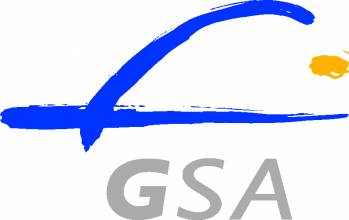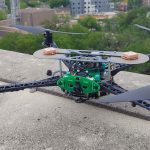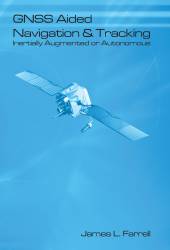In major step toward enabling unmanned aircraft to operate freely in the U.S. the federal government released a set of plans Thursday (November 7, 2013)on how it plans to integrate unmanned aerial systems (UAS) into the national airspace, including a policy to help protect the privacy of those living near drone test sites.
In major step toward enabling unmanned aircraft to operate freely in the U.S. the federal government released a set of plans Thursday (November 7, 2013)on how it plans to integrate unmanned aerial systems (UAS) into the national airspace, including a policy to help protect the privacy of those living near drone test sites.
The Federal Aviation Administration (FAA) unveiled the "Integration of Civil Unmanned Aircraft Systems (UAS) in the National Airspace System (NAS) Roadmap," a 74-page document that lays out the tasks needed to successfully weave the operations of thousands of commercial drones into the airways without putting at risk the more than 15 million passengers who traverse U.S. skies daily.
The U.S. Department of Transportation (DoT) also released a companion publication, Unmanned Aircraft Systems (UAS) Comprehensive Plan, which covers the responsibilities of five other agencies including the Department of Defense (DoD), Department of Homeland Security (DHS), and NASA.
“Congress has called upon us to safely integrate the use of unmanned aircraft by 2015,” FAA Administrator Michael Huerta said at an Aerospace Industry Association briefing on UAS. “What the roadmap gives us is a clear path toward achieving that goal,”
Huerta acknowledged that the effort is “complex,” adding, “There are issues related to the operator, issues related to the aircraft, and issues related to the use of these particular aircraft in the national airspace system. So, the purpose of the roadmap and the comprehensive plan is to layout all the steps that need to take place to establish what those goals look like.”
Congress tasked the FAA in 2012 with finding a way to integrate UAS and unleash what could a multi-billion-dollar industry flush with thousands of high-paying jobs. Lawmakers gave the agency until 2015 to complete the task.
Although Huerta told the audience “the FAA will fulfill its statutory obligations to integrate unmanned systems” and said 2015 was “still the goal,” what that means to him, he said, was “demonstrating what safe integration looks like, what its characteristics are, and to have a framework in place.”
“The U.S. is recognized as the ‘gold standard’ for aviation safety, efficiency and technology. And we need to keep it that way,” he told the audience.
The roadmap, which is a five-year plan that will be updated annually, looks broadly at essential tasks, including development of the “sense and avoid” technology needed to reduce the chance of collisions, assured communications, emergency planning, and UAS design certifications.
“Together, we need to address the many areas where we need standards for these new unmanned aircraft. This includes standards for manufacturing and standards for pilot training,” Huerta said.
In the near term, which the roadmap defines as roughly the next five years, the FAA plans to use case-by-case approvals to operate under exceptions to current airspace rules — essentially what it is doing now.
It will work to “establish new or revised regulations, policies, procedures, guidance material, training, and understanding of systems and operations” that would support routine NAS operations,” starting in the near-term but stretching out for another five or more years. Full integration, which requires technology standards, regulations, and certifications, could be more than 10 years away.
UAV Test Sites Face Privacy Rules
The FAA still plans to announce by the end of this year its choices for six test sites for flying unmanned aerial vehicles (UAVs) where the research will take place to help address technical hurdles and set operational procedures. Those test sites, which are the focus of fierce competition among two dozen states, will all need to develop privacy policies and comply with existing privacy laws under final requirements also issued Thursday.
Though the FAA declined to set up regular privacy audits, it did mandate that test sites keep a record of users. The agency also reserved the right to suspend or modify a site’s operational authority if charges for violations are filed and not wait for the due process on the charges to play out, as one commenter requested.
The FAA will also require every UAS operator to have a written plan for the use and retention of the data they collect, and sites must conduct an annual review of its compliance with privacy laws and present the results in a public forum where there is an opportunity for feedback.
Aviation officials took this approach despite broad feedback that policing privacy was not the FAA’s job.
“The FAA’s mission is to provide the safest, most efficient aerospace system in the world,” Huerta said.” At the same time, the FAA recognizes that there is substantial debate and difference of opinion among policy makers, industry, advocacy groups and members of the public as to whether UAS operations at the Test Sites will raise novel privacy issues that are not adequately addressed by existing legal frameworks.”
Having the privacy requirements, the policy document stated, will help inform the privacy dialog and thereby aid the agency in integrating unmanned systems.
The Association for Unmanned Vehicle Systems International (AUVSI), which represents UAS companies and opposed additional regulation, praised the approach.
AUVSI “applauds the FAA for setting forth a privacy policy for UAS test sites that affirms the strength of existing federal and state privacy laws,” said Michael Toscano, AUVSI’s president and CEO, in a press statement after the following release of the UAS documents. “As an industry, we believe privacy is important, and that the Fourth Amendment to the U.S. Constitution and subsequent court decisions provide a robust legal framework that protects Americans’ right to privacy.”
Not everyone was as enthusiastic. Sen Ed Markey, D-Mass., a member of the Commerce, Science and Transportation Committee, which has jurisdiction over the FAA, chided the agency for sidestepping the issue.
“While the FAA is right to require privacy plans for drone operations, a patchwork of plans without a federal law is simply not enough to ensure the strongest safeguards are in place before tens of thousands of drones take to the skies,” Markey said in a statement. “A state-by-state plan makes no sense. Protecting Americans’ privacy from drones should not be dependent on the drone’s flight path.”
Markey recently introduced the Drone Aircraft Privacy and Transparency Act of 2013, which adds privacy protections to ensure that unmanned systems “cannot and will not be used to spy on Americans.”






